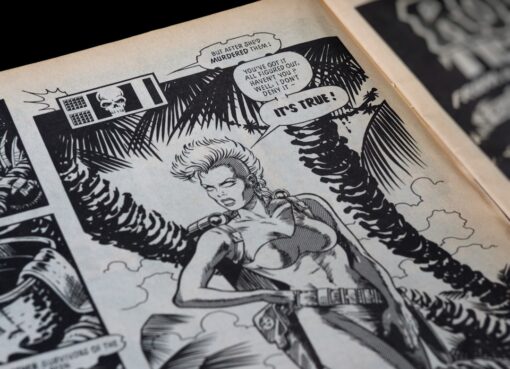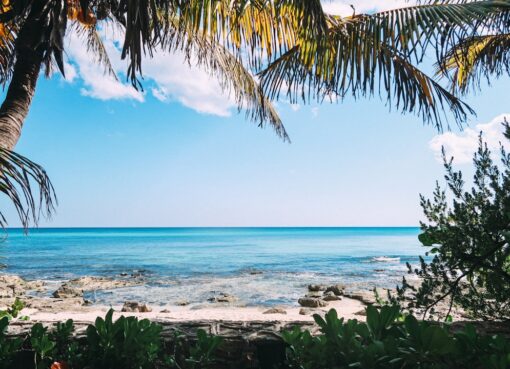The Allure of Bourbon: A Spirited Journey.

Bourbon is a type of American whiskey that is known for its rich and distinct flavor profile. It is made primarily from corn and aged in charred oak barrels, giving it a unique taste and color. The origins of bourbon can be traced back to the late 18th century in Kentucky, where it was first produced by early settlers.
The term “bourbon” itself is believed to have originated from Bourbon County, Kentucky, which was named after the French royal family. However, the exact origins of the name are still debated among historians. What is clear is that bourbon quickly became popular in Kentucky due to the abundance of corn and limestone-filtered water, which are essential ingredients in its production.
Several historical figures and events played a significant role in shaping the development of bourbon. One such figure is Evan Williams, who is often credited as being one of the first commercial distillers of bourbon. He established his distillery in Louisville, Kentucky in the late 18th century and helped popularize bourbon throughout the region.
Another important event in bourbon’s history was the Whiskey Rebellion of 1794. This rebellion was a response to a tax imposed on whiskey by the federal government, which led to widespread protests among distillers. The rebellion was eventually quelled, but it highlighted the importance of whiskey and bourbon in American society.
Key Takeaways
- Bourbon is a type of whiskey that originated in Kentucky in the late 18th century.
- The distilling process involves converting grains into a mash, fermenting it, and then distilling it in copper stills.
- Bourbon’s unique flavor profile comes from the use of at least 51% corn in the mash, as well as the charred oak barrels used for aging.
- Barrel aging is a crucial step in the production of bourbon, as it imparts flavors and colors to the spirit.
- Bourbon is a distinctly American spirit that has played a significant role in the country’s history and culture.
The Distilling Process: From Grain to Glass
The production of bourbon involves several steps, each of which contributes to its unique flavor profile. The main ingredients used in bourbon production are corn, barley, rye, and water. The exact proportions of these ingredients can vary depending on the distillery and the desired flavor profile.
The first step in the distilling process is milling, where the grains are ground into a coarse meal. This meal is then mixed with hot water to convert the starches into fermentable sugars. The resulting mixture, known as the mash, is then transferred to a fermentation vessel.
During fermentation, yeast is added to the mash, which converts the sugars into alcohol. This process typically takes several days and produces a liquid known as distiller’s beer. The distiller’s beer is then distilled in a still, which separates the alcohol from the other components of the liquid.
After distillation, the bourbon is aged in charred oak barrels. The aging process is crucial for developing bourbon’s flavor and color. The longer the bourbon is aged, the more complex and mellow its flavor becomes. The aging process also allows the bourbon to absorb flavors from the charred oak barrels, giving it additional depth and character.
The Unique Flavor Profile of Bourbon
Bourbon has a distinct flavor profile that sets it apart from other spirits. It is known for its rich, sweet, and full-bodied taste, with notes of caramel, vanilla, and oak. The flavor profile of bourbon can vary depending on several factors, including the aging process and the mash bill.
The aging process plays a significant role in developing bourbon’s flavor. As bourbon ages in charred oak barrels, it absorbs flavors from the wood, such as vanilla and caramel. The temperature and humidity of the aging environment also influence the flavor profile of bourbon. Higher temperatures can accelerate the aging process and result in a more intense flavor profile.
The mash bill, which refers to the combination of grains used in bourbon production, also affects its flavor. Bourbon must be made from a mash bill that contains at least 51% corn. The remaining grains can include barley, rye, or wheat. Each grain contributes its own unique flavors to the final product.
The Art of Barrel Aging: How it Impacts Bourbon
Barrel aging is a crucial step in bourbon production that significantly impacts its flavor and color. Bourbon must be aged in new charred oak barrels, which give it its distinct taste and appearance. The type of barrel used and the length of aging can greatly influence the final product.
There are several types of barrels used in bourbon aging, including American white oak, French oak, and sherry casks. American white oak is the most commonly used type of barrel and is known for imparting flavors of vanilla, caramel, and spice to the bourbon. French oak barrels are less common but can add more subtle flavors, such as floral and fruity notes. Sherry casks are sometimes used for finishing bourbon, adding a unique sweetness and complexity to the final product.
The aging process in barrels allows the bourbon to develop its flavor and color. As the bourbon interacts with the wood, it absorbs compounds from the barrel, such as tannins and lignins. These compounds contribute to the flavor profile of the bourbon and give it a rich amber color.
Temperature and humidity also play a crucial role in barrel aging. Higher temperatures can cause the bourbon to expand and contract within the barrel, allowing it to interact more with the wood. Humidity levels can affect how much water evaporates from the barrel, which can concentrate the flavors of the bourbon.
Bourbon vs. Whiskey: What’s the Difference?
Bourbon is often confused with whiskey, but there are some key differences between the two. While all bourbons are whiskeys, not all whiskeys are bourbons. The main difference lies in their production methods and legal requirements.
Bourbon is a type of whiskey that is made primarily from corn and aged in new charred oak barrels. It must be produced in the United States to be considered bourbon. Additionally, bourbon must meet specific legal requirements, such as being distilled to no more than 160 proof (80% alcohol by volume) and entering the barrel for aging at no more than 125 proof (62.5% alcohol by volume).
Whiskey, on the other hand, is a broad category that includes various types of distilled spirits made from fermented grain mash. It can be produced anywhere in the world and can be made from a variety of grains, such as barley, corn, rye, and wheat. Whiskey also has its own set of legal requirements, depending on the country of origin.
There are also regional differences in whiskey production. Scotch whisky, for example, is made in Scotland and must be aged in oak barrels for at least three years. Irish whiskey is made in Ireland and is typically triple-distilled for a smoother flavor. American whiskey encompasses a wide range of styles, including bourbon, rye whiskey, and Tennessee whiskey.
The Role of Bourbon in American Culture

Bourbon has a long and storied history in American culture and is often associated with Southern hospitality and tradition. It has played a significant role in shaping American society and has become an integral part of the country’s cultural identity.
Bourbon has deep historical roots in America, dating back to the early days of the country’s founding. It was enjoyed by early settlers and played a role in the Whiskey Rebellion, which highlighted the importance of whiskey and bourbon in American society.
Bourbon is also closely associated with Southern culture and hospitality. It is often seen as a symbol of Southern tradition and is deeply ingrained in the region’s social fabric. Bourbon has been enjoyed at social gatherings, such as weddings and parties, and is often associated with warmth, hospitality, and good company.
In contemporary American society, bourbon has experienced a resurgence in popularity. It has become a trendy spirit among younger generations and has gained a reputation for being sophisticated and artisanal. Bourbon tastings and festivals have become popular events, allowing enthusiasts to explore different brands and flavors.
Bourbon Tourism: Exploring Kentucky’s Bourbon Trail
Kentucky’s Bourbon Trail is a popular tourist destination for bourbon enthusiasts and history buffs alike. It offers visitors the opportunity to explore the rich history and heritage of bourbon production in the state.
The Bourbon Trail is a collection of distilleries and attractions located throughout Kentucky. It spans several counties and offers visitors the chance to learn about the distilling process, sample different bourbons, and immerse themselves in the culture of bourbon.
Some of the distilleries along the Bourbon Trail include Maker’s Mark, Woodford Reserve, and Jim Beam. Each distillery offers guided tours that provide insight into the bourbon-making process and allow visitors to see firsthand how bourbon is produced.
In addition to distilleries, the Bourbon Trail also features other attractions, such as historic sites and museums. These attractions provide a deeper understanding of bourbon’s historical and cultural significance in Kentucky.
When planning a trip to the Bourbon Trail, it is important to consider logistics such as transportation and accommodations. The trail covers a large area, so it is advisable to plan ahead and allocate enough time to visit multiple distilleries and attractions. It is also recommended to make reservations for distillery tours in advance, as they can fill up quickly during peak tourist seasons.
The Rise of Craft Bourbon: Small Batch Distilleries
In recent years, there has been a growing interest in craft bourbon, which refers to bourbon produced by small batch distilleries. Craft bourbon is often associated with artisanal production methods and unique flavor profiles.
Craft bourbon distilleries are typically smaller in scale compared to larger commercial distilleries. They often focus on producing small batches of bourbon using traditional methods and high-quality ingredients. Craft distillers may experiment with different mash bills, aging techniques, and barrel types to create unique flavor profiles.
One of the defining characteristics of craft bourbon is its emphasis on quality over quantity. Craft distillers often prioritize attention to detail and hands-on production methods. They may use traditional pot stills, which allow for more control over the distillation process and can result in a more nuanced and complex bourbon.
Craft bourbon has gained popularity among whiskey enthusiasts who appreciate the artistry and craftsmanship that goes into its production. It offers a unique alternative to mass-produced bourbons and allows consumers to support small businesses and local economies.
Some notable craft bourbon distilleries include Willett Distillery in Kentucky, High West Distillery in Utah, and Balcones Distilling in Texas. These distilleries have gained recognition for their innovative approaches to bourbon production and have helped shape the craft bourbon movement.
Bourbon Cocktails: Classic and Modern Recipes
Bourbon is a versatile spirit that can be enjoyed neat, on the rocks, or in a variety of cocktails. It is a key ingredient in many classic cocktails, as well as modern creations that showcase its unique flavor profile.
One of the most iconic bourbon cocktails is the Old Fashioned. This classic cocktail dates back to the early 19th century and is made by muddling sugar with bitters, adding bourbon, and garnishing with an orange twist and cherry. The Old Fashioned is known for its simplicity and allows the flavors of the bourbon to shine.
Another classic bourbon cocktail is the Mint Julep. This refreshing cocktail is traditionally served in a silver or pewter cup and is made by muddling fresh mint leaves with sugar, adding bourbon and crushed ice, and garnishing with a mint sprig. The Mint Julep is closely associated with the Kentucky Derby and is often enjoyed during the spring and summer months.
In addition to classic cocktails, there are also many modern recipes that incorporate bourbon. These cocktails often feature unique flavor combinations and creative presentations. For example, the Boulevardier is a modern twist on the classic Negroni that substitutes bourbon for gin. It combines bourbon, sweet vermouth, and Campari, and is garnished with an orange twist.
When making bourbon cocktails, it is important to choose a bourbon that complements the other ingredients. Different bourbons have different flavor profiles, so it is advisable to experiment with different brands and styles to find the perfect match for your cocktail.
Collecting Bourbon: The World of Rare and Vintage Bottles
Bourbon collecting has become a popular hobby among whiskey enthusiasts, with a thriving market for rare and vintage bottles. Collecting bourbon allows enthusiasts to explore the history and heritage of the spirit and can be a rewarding and enjoyable pursuit.
The bourbon collecting market is influenced by several factors that can impact the value of rare and vintage bottles. One such factor is age, as older bottles are often considered more valuable due to their rarity. Limited edition releases and bottles from closed distilleries are also highly sought after by collectors.
The condition of the bottle and packaging can also affect its value. Bottles that are in pristine condition, with intact labels and seals, are generally more valuable than those that show signs of wear or damage. Collectors often look for bottles that have been stored properly, away from direct sunlight and extreme temperatures.
Provenance, or the history of a bottle, can also play a role in its value. Bottles with interesting stories or connections to historical events or figures are often highly prized by collectors. For example, bottles that were owned by famous individuals or were part of significant collections may command higher prices.
Starting a bourbon collection can be an exciting endeavor, but it is important to do thorough research and educate yourself about the market. It is advisable to join online communities or attend whiskey auctions and tastings to learn from experienced collectors and experts. Building a collection takes time and patience, but it can be a rewarding way to explore the world of bourbon.
If you’re a bourbon enthusiast looking to expand your knowledge and explore new flavors, you won’t want to miss this fascinating article on the history and production of bourbon. Discover the secrets behind this beloved American spirit and learn about the different types and brands that have made their mark in the industry. From its humble beginnings to its rise in popularity, this article from By The Seaside provides a comprehensive overview of bourbon’s journey. So grab your favorite glass and dive into the world of bourbon by clicking here. Cheers!
FAQs
What is bourbon?
Bourbon is a type of American whiskey that is made primarily from corn and aged in charred oak barrels.
What is the difference between bourbon and other types of whiskey?
Bourbon is made from at least 51% corn, while other types of whiskey may be made from different grains such as rye or barley. Bourbon must also be aged in new, charred oak barrels, while other types of whiskey may be aged in used barrels.
Where is bourbon made?
Bourbon is primarily made in the United States, with the majority of production taking place in Kentucky.
What is the history of bourbon?
Bourbon has been produced in the United States since the late 18th century, with Kentucky becoming the center of production in the early 19th century. The name “bourbon” is believed to have originated from Bourbon County, Kentucky.
What are some popular brands of bourbon?
Some popular brands of bourbon include Maker’s Mark, Jim Beam, Wild Turkey, and Woodford Reserve.
How is bourbon typically consumed?
Bourbon can be consumed neat (without any mixers), on the rocks (with ice), or in cocktails such as the Old Fashioned or the Manhattan.
Leave a Reply
You must be logged in to post a comment.



Leave a Comment